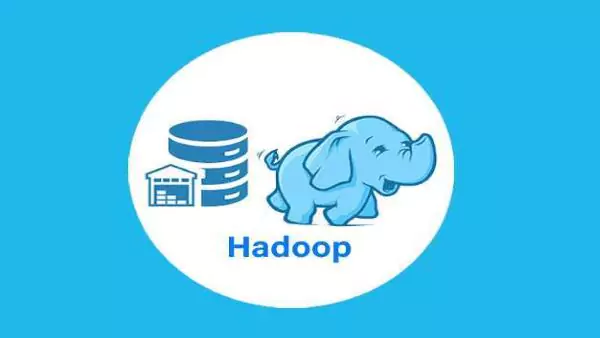
Bigdata, Hadoop Course
Tally Course, Tally ERP 9, Spoken English Classes, Digital Marketing Course, Python for Beginners, Java Programming, Graphic Design Course, Website Development Course, Internship
Bigdata, Hadoop Course
Course Detail
Bigdata, Hadoop

Oxford Global Academy of Excellence Big Data Hadoop course lets you master the concepts of the Hadoop framework, Big data tools, and methodologies. Achieving a Big Data Hadoop certification prepares you for success as a Big Data Developer. This Big Data and Hadoop training help you understand how the various components of the Hadoop ecosystem fit into the Big Data processing lifecycle. Take this Big Data and Hadoop online training to explore Spark applications, parallel processing, and functional programming.
We have the best courses for you!
Enroll today and learn something new.Syllabus
Module 1
The architecture of Hadoop cluster:
- What is High Availability and Federation?
- How to setup a production cluster?
- How to setup a production cluster?
- Various shell commands in Hadoop
- Installing a single node cluster with Cloudera Manager
- Understanding Spark, Scala, Sqoop, Pig, and Flume
Introduction to Big Data Hadoop and Understanding HDFS and MapReduce:
- Introducing Big Data and Hadoop
- What is Big Data and where does Hadoop fit in?
- Two important Hadoop ecosystem components, namely, MapReduce and HDFS
- In-depth Hadoop Distributed File System – Replications, Block Size, Secondary Name node, High Availability and in-depth YARN – resource manager and node manager
Hands-on Exercise::
- HDFS working mechanism
- Data replication process
- How to determine the size of the block?
- Understanding a data node and name node
Deep Dive in MapReduce::
- Learning the working mechanism of MapReduce
- Understanding the mapping and reducing stages in MR
- Various terminologies in MR like Input Format, Output Format, Partitioners, Combiners, Shuffle, and Sort
Hands-on Exercise::
- How to write a WordCount program in MapReduce?
- How to write a Custom Partitioner?
- What is a MapReduce Combiner?
- How to run a job in a local job runner
- Deploying a unit test
- What is a map side join and reduce side join?
- What is a tool runner?
- How to use counters, dataset joining with map side, and reduce side joins?
Introduction to Hive::
- Introducing Hadoop Hive
- Detailed architecture of Hive
- Comparing Hive with Pig and RDBMS
- Working with Hive Query Language
- Creation of a database, table, group by and other clauses
- Various types of Hive tables, HCatalog
- Storing the Hive Results, Hive partitioning, and Buckets
Module 2
Advanced Hive and Impala:
- Indexing in Hive
- The ap Side Join in Hive
- Working with complex data types
- The Hive user-defined functions
- Introduction to Impala
- Comparing Hive with Impala
Hands-on Exercise:
- How to work with Hive queries?
- The process of joining the table and writing indexes
- External table and sequence table deployment
- Data storage in a different table
Introduction to Pig:
- Apache Pig introduction and its various features
- Various data types and schema in Hive
- The available functions in Pig, Hive Bags, Tuples, and Fields
Hands-on Exercise:
- Working with Pig in MapReduce and local mode
- Loading of data
- Limiting data to 4 rows
- Storing the data into files and working with Group By, Filter By, Distinct, Cross, Split in Hive
Flume, Sqoop and HBase:
- Apache Sqoop introduction
- Importing and exporting data
- Performance improvement with Sqoop
- Sqoop limitations
- Introduction to Flume and understanding the architecture of Flume
- What is HBase and the CAP theorem?
Hands-on Exercise:
- Working with Flume to generate Sequence Number and consume it
- Using the Flume Agent to consume the Twitter data
- Using AVRO to create Hive Table
- AVRO with Pig
- Creating Table in HBase
- Deploying Disable, Scan, and Enable Table
Writing Spark Applications Using Scala:
- Using Scala for writing Apache Spark applications
- Detailed study of Scala
- The need for Scala
- The concept of object-oriented programming
- Executing the Scala code
- Various classes in Scala like getters, setters, constructors, abstract, extending objects, overriding methods
- The Java and Scala interoperability
- The concept of functional programming and anonymous functions
- Bobsrockets package and comparing the mutable and immutable collections
- Scala REPL, Lazy Values, Control Structures in Scala, Directed Acyclic Graph (DAG), first Spark application using SBT/Eclipse, Spark Web UI, Spark in Hadoop ecosystem.
Hands-on Exercise:
- Writing Spark application using Scala
- Understanding the robustness of Scala for Spark real-time analytics operation
Module 3
Use Case Bobsrockets Package:
- Introduction to Scala packages and imports
- The selective imports
- The Scala test classes
- Introduction to JUnit test class
- JUnit interface via JUnit 3 suite for Scala test
- Packaging of Scala applications in the directory structure
- Examples of Spark Split and Spark Scala
Introduction to Spark:
- Introduction to Spark
- Spark overcomes the drawbacks of working on MapReduce
- Understanding in-memory MapReduce
- Interactive operations on MapReduce
- Spark stack, fine vs. coarse-grained update, Spark stack, Spark Hadoop YARN, HDFS Revision, and YARN Revision
- The overview of Spark and how it is better than Hadoop
- Deploying Spark without Hadoop
- Spark history server and Cloudera distribution
Spark Basics:
- Spark installation guide
- Spark configuration
- Memory management
- Executor memory vs. driver memory
- Working with Spark Shell
- The concept of resilient distributed datasets (RDD)
- Learning to do functional programming in Spark
- The architecture of Spark
Working with RDDs in Spark:
- Spark RDD
- Creating RDDs
- RDD partitioning
- Operations and transformation in RDD
- Deep dive into Spark RDDs
- The RDD general operations
- Read-only partitioned collection of records
- Using the concept of RDD for faster and efficient data processing
- RDD action for the collect, count, collects map, save-as-text-files, and pair RDD functions
Module 4
Aggregating Data with Pair RDDs:
- Understanding the concept of key-value pair in RDDs
- Learning how Spark makes MapReduce operations faster
- Various operations of RDD
- MapReduce interactive operations
- Fine and coarse-grained update
- Spark stack
Writing and Deploying Spark Applications:
- Comparing the Spark applications with Spark Shell
- Creating a Spark application using Scala or Java
- Deploying a Spark application
- Scala built application
- Creation of the mutable list, set and set operations, list, tuple, and concatenating list
- Creating an application using SBT
- Deploying an application using Maven
- The web user interface of Spark application
- A real-world example of Spark
- Configuring of Spark
Writing and Deploying Spark Applications:
- Comparing the Spark applications with Spark Shell
- Creating a Spark application using Scala or Java
- Deploying a Spark application
- Scala built application
- Creation of the mutable list, set and set operations, list, tuple, and concatenating list
- Creating an application using SBT
- Deploying an application using Maven
- The web user interface of Spark application
- A real-world example of Spark
- Configuring of Spark
Project Solution Discussion and Cloudera Certification Tips and Tricks:
- Working towards the solution of the Hadoop project solution
- Its problem statements and the possible solution outcomes
- Preparing for the Cloudera certifications
- Points to focus on scoring the highest marks
- Tips for cracking Hadoop interview questions
Hands-on Exercise:
- The project of a real-world high value Big Data Hadoop application
- Getting the right solution based on the criteria set by the Intellipaat team
Parallel Processing:
- Learning about Spark parallel processing
- Deploying on a cluster
- Introduction to Spark partitions
- File-based partitioning of RDDs
- Understanding of HDFS and data locality
- Mastering the technique of parallel operations
- Comparing repartition and coalesce
- RDD actions
Module 5
Spark RDD Persistence:
- The execution flow in Spark
- Understanding the RDD persistence overview
- Spark execution flow, and Spark terminology
- Distribution shared memory vs. RDD
- RDD limitations
- Spark shell arguments
- Distributed persistence
- RDD lineage
- Key-value pair for sorting implicit conversions like CountByKey, ReduceByKey, SortByKey, and AggregateByKey
Spark MLlib:
- Introduction to Machine Learning
- Types of Machine Learning
- Introduction to MLlib
- Various ML algorithms supported by MLlib
- Linear regression, logistic regression, decision tree, random forest, and K-means clustering techniques
Hands-on Exercise:
- Building a Recommendation Engine
Integrating Apache Flume and Apache Kafka:
- Why Kafka and what is Kafka?
- Kafka architecture
- Kafka workflow
- Configuring Kafka cluster
- Operations
- Kafka monitoring tools
- Integrating Apache Flume and Apache Kafka
Hands-on Exercise:
- Configuring Single Node Single Broker Cluster
- Configuring Single Node Multi Broker Cluster
- Producing and consuming messages
- Integrating Apache Flume and Apache Kafka
Spark Streaming:
- Introduction to Spark Streaming
- Features of Spark Streaming
- Spark Streaming workflow
- Initializing Streaming Context, discretized Streams (DStreams), input DStreams and Receivers
- Transformations on DStreams, output operations on DStreams, windowed operators and why it is useful
Important windowed operators and stateful operators Hands-on Exercise:
- Twitter Sentiment analysis
- Streaming using Netcat server
- Kafka–Spark streaming
- Spark–Flume streaming
Module 6
Improving Spark Performance:
- Introduction to various variables in Spark like shared variables and broadcast variables
- Learning about accumulators
- The common performance issues
- Troubleshooting the performance problems
Spark SQL and Data Frames:
- Learning about Spark SQL
- The context of SQL in Spark for providing structured data processing
- JSON support in Spark SQL
- Working with XML data
- Parquet files
- Creating Hive context
- Writing data frame to Hive
- Reading JDBC files
- Understanding the data frames in Spark
- Creating Data Frames
- Manual inferring of schema
- Working with CSV files
- Reading JDBC tables
- Data frame to JDBC
- User-defined functions in Spark SQL
- Shared variables and accumulators
- Learning to query and transform data in data frames
- Data frame provides the benefit of both Spark RDD and Spark SQL
- Deploying Hive on Spark as the execution engine
Scheduling/Partitioning:
- Learning about the scheduling and partitioning in Spark
- Hash partition
- Range partition
- Scheduling within and around applications
- Static partitioning, dynamic sharing, and fair scheduling
- Map partition with index, the Zip, and GroupByKey
- Spark master high availability, standby masters with ZooKeeper, single-node recovery with the local file system and high order functions
Hadoop Administration – Multi-node Cluster Setup Using Amazon EC2:
- Create a 4-node Hadoop cluster setup
- Running the MapReduce Jobs on the Hadoop cluster
- Successfully running the MapReduce code
- Working with the Cloudera Manager setup
Hands-on Exercise:
- The method to build a multi-node Hadoop cluster using an Amazon EC2 instance
- Working with the Cloudera Manager
Hadoop Administration – Cluster Configuration:
- Overview of Hadoop configuration
- The importance of Hadoop configuration file
- The various parameters and values of configuration
- The HDFS parameters and MapReduce parameters
- Setting up the Hadoop environment
- The Include and Exclude configuration files
- The administration and maintenance of name node, data node directory structures, and files
- What is a File system image?
- Understanding Edit log
Hands-on Exercise:
- The process of performance tuning in MapReduce
Module 7
Hadoop Administration – Maintenance, Monitoring and Troubleshooting:
- Introduction to the checkpoint procedure, name node failure
- How to ensure the recovery procedure, Safe Mode, Metadata and Data backup, various potential problems and solutions, what to look for and how to add and remove nodes
Hands-on Exercise:
- How to go about ensuring the MapReduce File System Recovery for different scenarios
- JMX monitoring of the Hadoop cluster
- How use the logs and stack traces for monitoring and troubleshooting
- Using the Job Scheduler for scheduling jobs in the same cluster
- Getting the MapReduce job submission flow
- FIFO schedule
- Getting to know the Fair Scheduler and its configuration
ETL Connectivity with Hadoop Ecosystem (Self-Paced):
- How ETL tools work in Big Data industry?
- Introduction to ETL and data warehousing
- Working with prominent use cases of Big Data in ETL industry
- End-to-end ETL PoC showing Big Data integration with ETL tool
Hands-on Exercise:
- Connecting to HDFS from ETL tool
- Moving data from Local system to HDFS
- Moving data from DBMS to HDFS,
- Working with Hive with ETL Tool
- Creating MapReduce job in ETL tool
Hadoop Application Testing:
- Importance of testing
- Unit testing, Integration testing, Performance testing, Diagnostics, Nightly QA test, Benchmark and end-to-end tests, Functional testing, Release certification testing, Security testing, Scalability testing, Commissioning and Decommissioning of data nodes testing, Reliability testing, and Release testing
Roles and Responsibilities of Hadoop Testing Professional:
- Understanding the Requirement
- Preparation of the Testing Estimation
- Test Cases, Test Data, Test Bed Creation, Test Execution, Defect Reporting, Defect Retest, Daily Status report delivery, Test completion, ETL testing at every stage (HDFS, Hive and HBase) while loading the input (logs, files, records, etc.) using Sqoop/Flume which includes but not limited to data verification, Reconciliation, User Authorization and Authentication testing (Groups, Users, Privileges, etc.), reporting defects to the development team or manager and driving them to closure
- Consolidating all the defects and create defect reports
- Validating new feature and issues in Core Hadoop
Module 8
Framework Called MRUnit for Testing of MapReduce Programs:
- Report defects to the development team or manager and driving them to closure
- Consolidate all the defects and create defect reports
- Responsible for creating a testing framework called MRUnit for testing of MapReduce programs
Unit Testing:
- Automation testing using the OOZIE
- Data validation using the query surge tool
Test Execution:
- Test plan for HDFS upgrade
- Test automation and result
Test Plan Strategy and Writing Test Cases for Testing Hadoop Application:
- Test, install and configure
Career Opportunities
- Hadoop/Big Data Developer
- Hadoop Administrator.
- Data Engineer
- Big Data Architect
- Machine Learning Engineer
- Software Development Engineer
- Big data Engineer
- Big Data Consultant
Entry Qualification
- Candidates will be admitted on the basis of interviews and / or group discussions.
- 20% of the total seats will be reserved for SC, ST and OBC candidates.If the reserved seats are not filled within the specified period, the vacant seats will be offered to the general candidates.
Course Features
Instructor
Industry Experienced Trainer
Rating
4.9 (Google Review)
Study Mode
Offline & Online
Duration
6 month
Language
English, Bengali, Hindi
100% Job Assistance
Yes
Internship
Free & Paid
Course Price
Click to Know
Our Students Testimonials

MD Kashid Hossain
I am MD Kasid Hossain. I am a student of Oxford Global Academy of Excellence, Kolkata. Here I am doing Spoken English class. Oxford Global Academy of Excellence is a very advantage platform by spoken English, computer course and more. There sirs, madams are very Helpful. All time they Support and guide us. I always enjoy my classes.




